| Pg 24 |
|---|
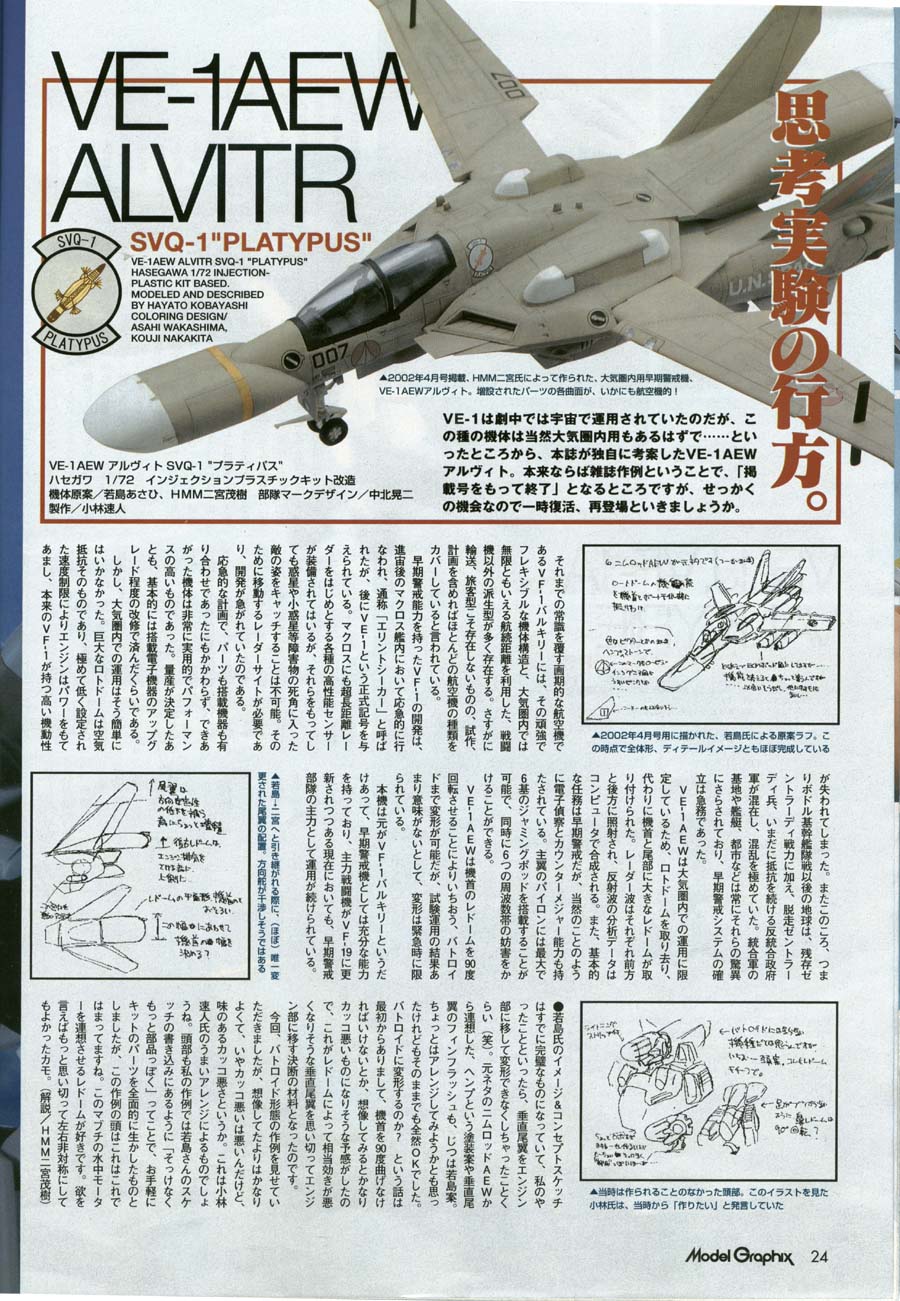
The Method Of A Thought Experiment
VE-1AEW Alvitr
SVQ-1 Platypus
Hasegawa 1/72 injection-plastic kit based
Modelled and described by Hayato Kobayashi
Colouring Design: Asahi Wakashima, Kouji Nakakita
Up: The atmospheric early-warning aircraft VE-1AEW Alvitr that was published in in the April 2002 issue, was made by Mr. HMM Ninomiya.
The VE-1AEW Alvitr that this magazine originally designed was done based on even though the VE-1 that appears in the movie being used in space, there naturally ought to be that kind of aircraft that is for atmospheric use... Even though it is by all rights an original of this magazine and "it is finished with its publication issue", shall we go with a temporary revival and reappearance due to a long-awaited opportunity?
Up: [scanlation] rough idea detail image that appeared in the April 2002 issue for the scratch-build.
The VF-1 Valkyrie, which is a ground-breaking aircraft that until then mere [illegible], a lot of derivative models beyond fighter aircraft exist, which utilize its sturdy, flexible airframe structure and a cruising range that was said to be infinite within the atmosphere. As one would expect, even though models for transport and passengers don't exist, if you include prototypes and planned ones, it's said that the derivative models cover most types of aircraft.
The development of a VF-1 that has early-warning abilities was took place in what was like an emergency, inside of the Macross after the Space Launch. Although it was nicknamed "Elint Seeker", it was later given the VE-1 formal code. Even though the VF-1 was equipped with all sorts of high-power sensors, including a super long range radar that's also on the Macross, it was impossible for the VF-1 to obtain the appearance of enemies who had entered into the blind spots of objects such as planets and asteroids. For that reason, a mobile radar site was necessary, and the [VE-1's] development was sped up.
In spite of the parts and the loaded equipment being on hand in the emergency plan, the completed airframe was one that was very practical and had high performance. Even after deciding its mass production, it was basically completed with improved installed electronic equipment to the extent of an upgrade [of the initial equipment].
However, its operation within the atmosphere didn't proceed very easily. The giant rotodome itself had air resistance, and the engines had too much power for the speed limits that were set lower, and it lost the high manoeuvrability of the original VF-1. Also, in short, it was after the Bodoru Main Fleet Battle at the time, and in addition to the combat capabilities of the remaining Zentraadi, there was the mixture of the the deserted Zentraadi soldiers and the Anti Unification Government forces that continue to resist even to this day, it can be taken for granted that there was disorder. Such things as the bases, war fleet, and investments of the Unified Forces always made those miracles, and the establishment of an early warning system was a pressing need.
As the VE-1AEW has been limited to operation within the atmosphere, the rotodome was removed, and big radomes were installed in the nose and tail instead. Radar waves were radiated respectively to the front and rear, and the analysis data of the rebound waves were combined in the computer. Also, although its basic functions are early warning, as expected, it was also made to have electronic reconnaissance and countermeasure abilities. A maximum of 6 jamming pods can be installed on the main wing pylons, and it can put jamming on 6 frequency bands at the same time.
Even though the VE-1AEW can more or less transform to Battroid by rotating the nose radome 90°, the transformation was thought to be fairly useless as a result of its test runs, and the transformation was restricted to emergencies.
In truth, as might be expected from an aircraft that has its origins in the VF-1 Valkyrie, it had plenty of ability as an early warning aircraft, and even now, while the main aircraft is being updated to the VF-19, the operation of the VE-1AEW is continuing as the main aircraft in the early warning units.
Left: [scanlation] rough notes on the addition of the radome to the tail, the lengthening of the tail wings, and additional sensors on the sides of the engine nacelles.
Up: [scanlation] rough notes on the new head and torso of the VE-1AEW.
[Scanlation] HMM Ninomiya's comments on the design.
| Pg 25-26 |
|---|
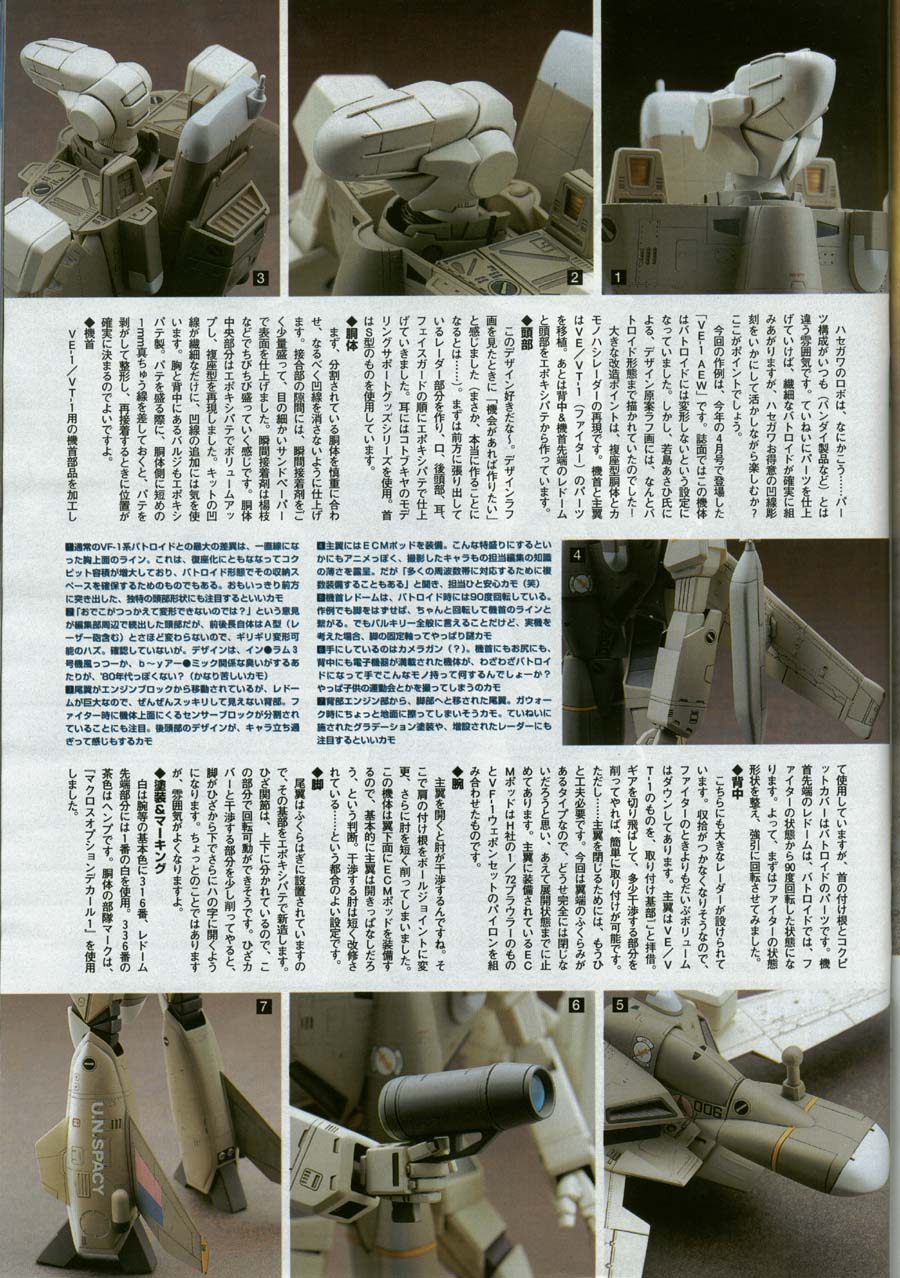
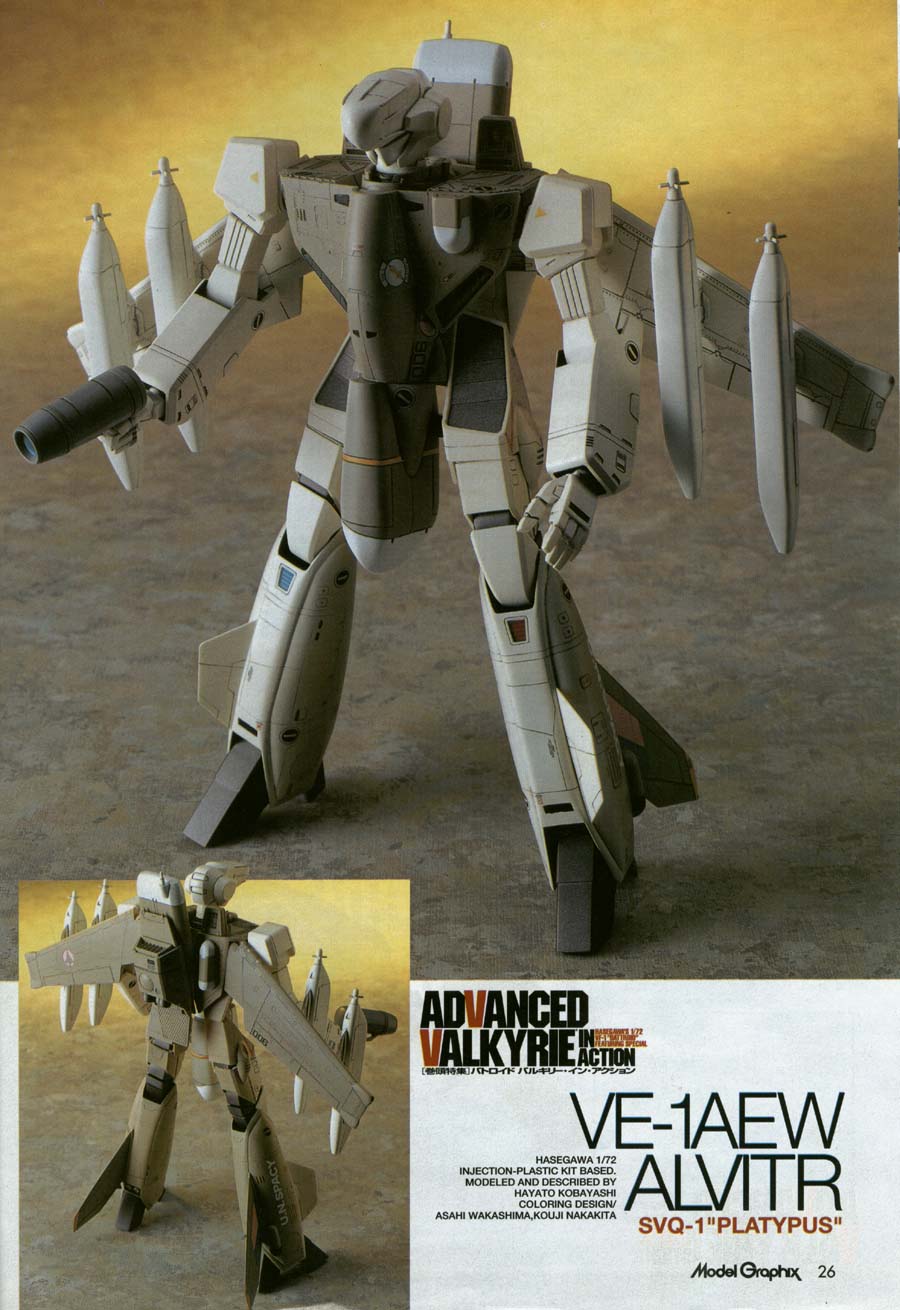
Pg 25
See link for text.
Pg 26
[Scanlation] HMM Ninomiya's comments continue, with paragraphs on: the head, the torso, the nose, the back, the arms, the legs, and the aircraft's coating and marking.
The central section includes notes on the pictures. Highlights are:
4: ECM pods on the main wings
5: nose rotates 90° when transforming to Battroid
6: there is a "Camera Gun (?)" in hand ('?' as per the article - it appears that the writer wasn't clear on what it is, either).
7: as the tail wings are on the back of the engine nacelles, they probably hit the ground when in GERWALK form. The author would like you to note the additional radar on the side of the engine nacelles.
| Pg 27-29 |
|---|
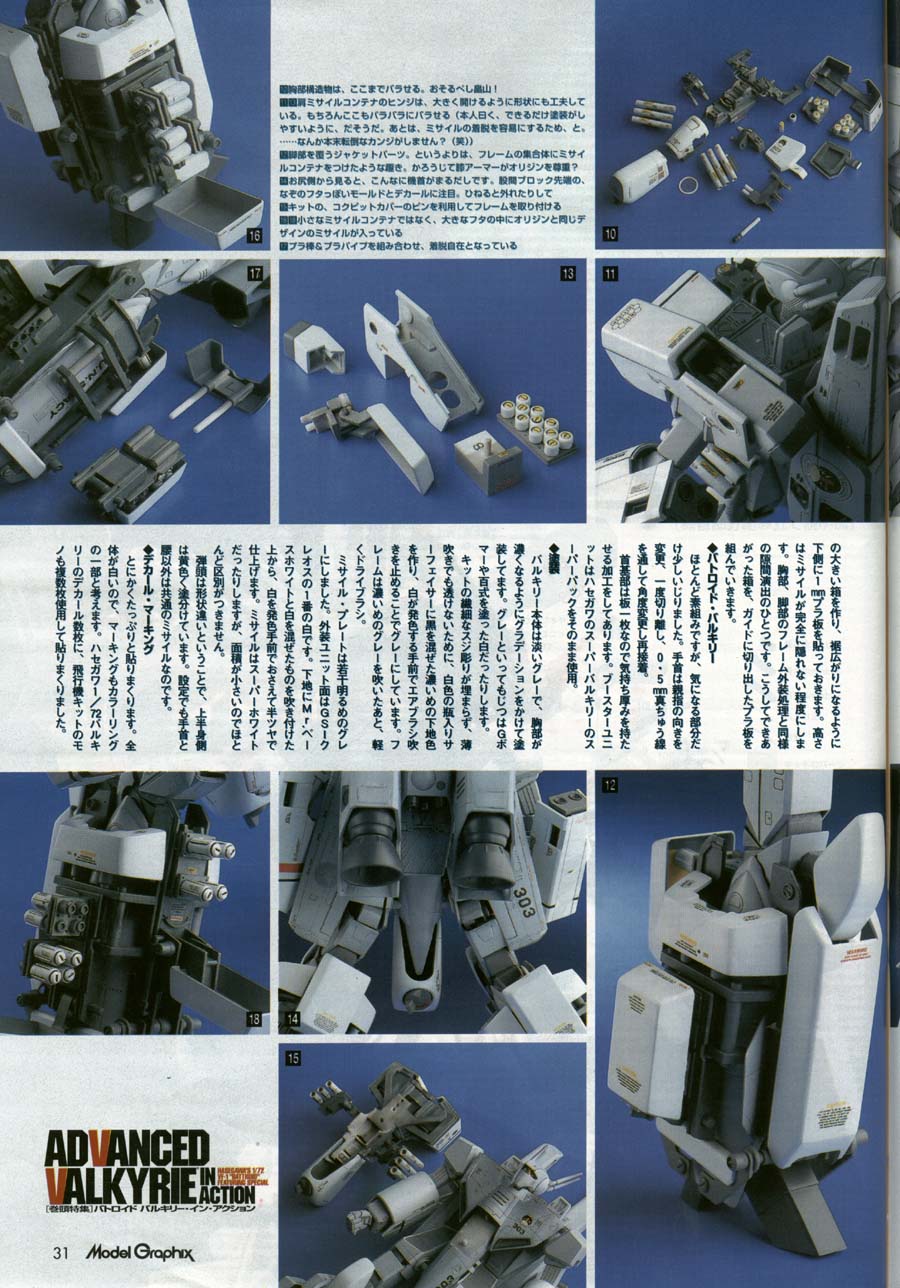
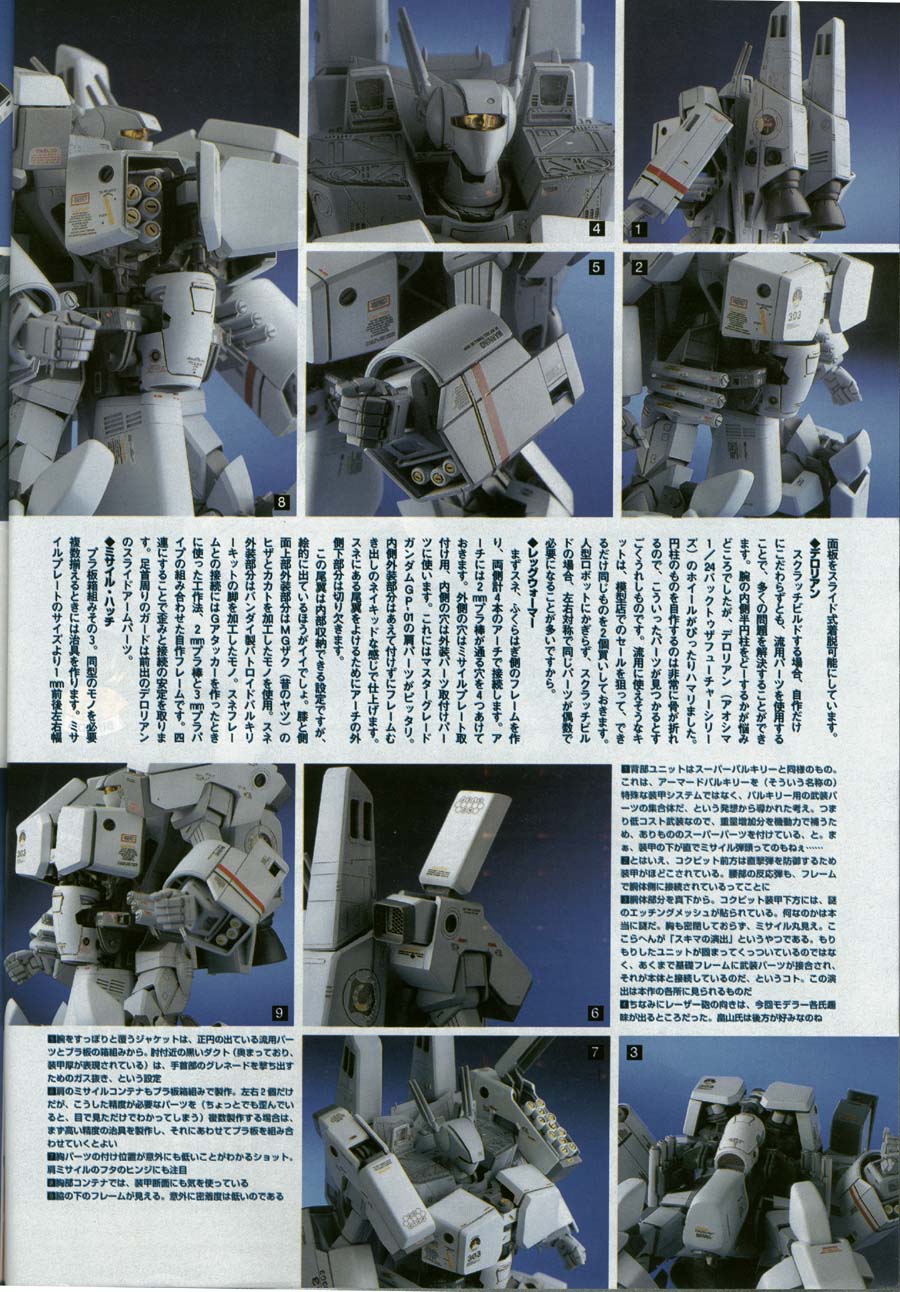
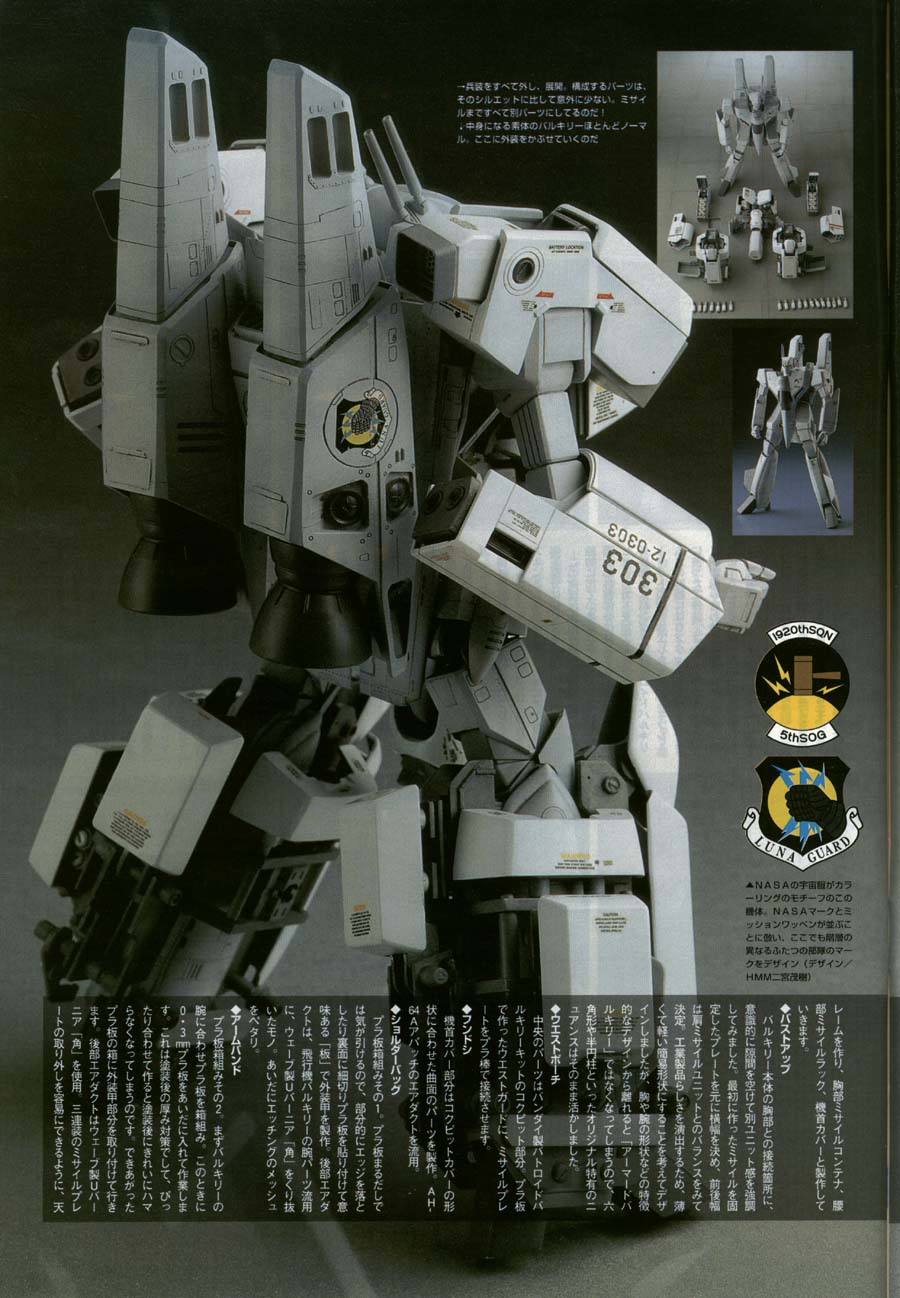
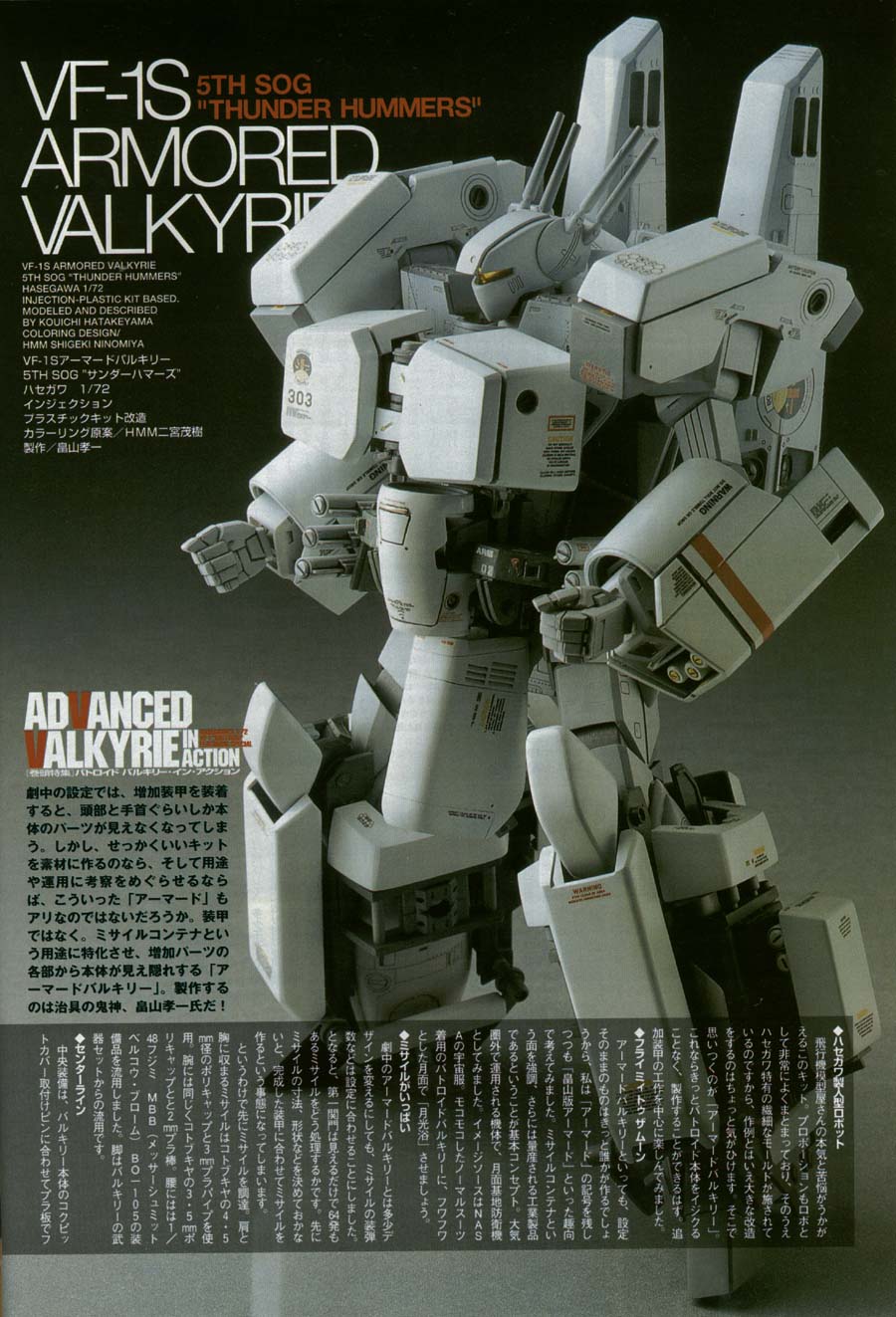
Pg 27
[Scanlation] modellers scratch-build of the GBP-1S, based on the newly released (at the time) VF-1 Battroid kit.
Pg 28
[Scanlation] comments on the scratch-build. The insignia have a NASA colouring motif.
Pg 29
[Scanlation] comments on the scratch-build continue.
Pg 30
[Scanlation] comments on the scratch-build continue.